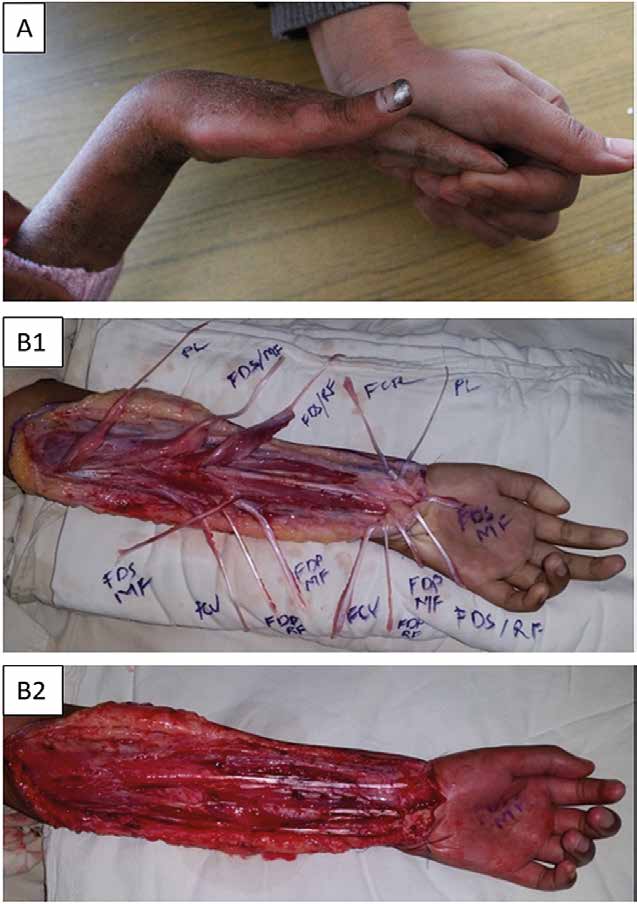Abstract
Introduction: Volkmann’s ischaemic contracture (VIC) is a disabling condition resulting from tissue necrosis due to impaired vascular supply to the limb. Over the years VIC has become rare in developed countries with many different aetiologies described. It was alarming to have high incidence of established VIC in our practice in Nepal. A detailed analysis was conducted to accurately describe this issue.
Methods: We collected 47 cases of VIC over six years and noted the age, sex, district of origin and cause of VIC, duration of injury to presentation, and the grade of VIC. Then we compared these characteristics of VIC of each Nepal province and created a map to show the problematic regions.
Results: Out of 47 patients, 46 could have been prevented by an early treatment. The most common cause was a tight cast in 25 patients (53.19%), followed by unintentionally self-caused VIC by applying tight bandages in 21 patients (44.68%). Most cases came from province 6 (29.78%). Our group included three mild (6.4%), 35 moderate (74.5%) and nine severe (19.1%) cases of VIC. Only 14 cases (29.78%) had a timely fasciotomy in the past.
Conclusion: VIC is an irreversible complication of the compartment syndrome which is an easily preventable condition in the setting of developing countries. Our focus should, therefore, aim at preventing such disastrous conditions as 97.87% of cases we encountered could have been avoided by proper primary care. In the case of Nepal most cases came from province 6 and province 3.

